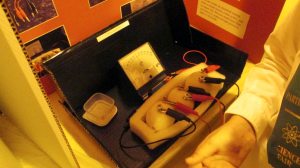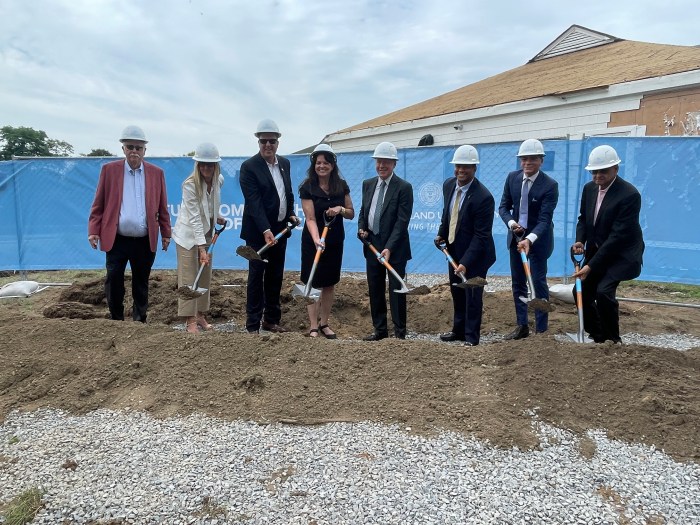 As the Science and Technology Fair at the Village School in Syosset kicked off on March 11, one could feel an immediate explosion of creativity.
As the Science and Technology Fair at the Village School in Syosset kicked off on March 11, one could feel an immediate explosion of creativity.
Students in grades three through five were excitedly showing off their science projects to parents and other guests, and eagerly of course to each other. It was thrilling to watch their enthusiasm as they explained their experiments and inventions and to see how gracious they were in accepting praise for their efforts.
 The Science and Technology Fair is an annual event whose main objective is to foster the love of science in young people. Today’s world demands that youngsters be prepared with the skills necessary to enter the burgeoning field of science and technology, a field that has already impacted their lives and will certainly impact their future.
The Science and Technology Fair is an annual event whose main objective is to foster the love of science in young people. Today’s world demands that youngsters be prepared with the skills necessary to enter the burgeoning field of science and technology, a field that has already impacted their lives and will certainly impact their future.
“One of the best things students learn from this event is how much fun science is,” said Village School principal Jeffrey Kasper. “The kids also learn how to take notes and how to speak in public, both very beneficial skills. But the most important thing the kids learn is how to work with others. Some of them work on their projects on their own, but many of the kids have partners with whom they share ideas. Partnerships are important in learning.”
Before the Science and Technology Fair even takes place, much happens in the classroom.
 “First,” said Eileen Hoffman, one of the science mentors, along with third-and-fourth-grade teachers Allyson Giles and Diana Serras, “we encourage students to use their imagination, to be creative. We work with the children on the scientific method. They learn how to do research and then to construct a hypothesis. Then they learn to do an experiment or to come up with an invention based on that hypothesis and then to analyze the data they find. Then they draw a conclusion and communicate their results on display boards.”
“First,” said Eileen Hoffman, one of the science mentors, along with third-and-fourth-grade teachers Allyson Giles and Diana Serras, “we encourage students to use their imagination, to be creative. We work with the children on the scientific method. They learn how to do research and then to construct a hypothesis. Then they learn to do an experiment or to come up with an invention based on that hypothesis and then to analyze the data they find. Then they draw a conclusion and communicate their results on display boards.”
Some of the experiments and inventions among the multitude of display boards throughout the fair were called “Training Cats,” “How to Make a Fizzy Lemonade,” “Tornado in a Bottle,” and “How Salt Crystals Form.”
Fourth-graders Jordan Badler and Nathan Edwards set up an experiment to demonstrate Newton’s third law of motion by constructing a balloon-powered rocket car. Another fourth-grader, Ryan Cleary, showed how rock candy is crystallized. And fourth-grade Lego master Nicolas Middendorf constructed a maze of Legos to show how fast a hamster could get through the maze using its sense of smell.
 Students also showed how electricity is conducted through lemons and how to make elephant toothpaste. On each of the display boards the students presented their hypothesis, the materials they used, the procedure they used, and the observation and conclusion they reached. The time and dedication the children gave to their projects was evidenced in their spectacular displays and well-thought-out presentations.
Students also showed how electricity is conducted through lemons and how to make elephant toothpaste. On each of the display boards the students presented their hypothesis, the materials they used, the procedure they used, and the observation and conclusion they reached. The time and dedication the children gave to their projects was evidenced in their spectacular displays and well-thought-out presentations.
Kasper also explained what other preparations happened before the Science Fair took place.
“Students worked on their projects at home, but they also came in once a week to work with a science mentor for special guidance. Then, when their projects were completed, they presented them to their classmates in their individual classes,” he said. “At that time, they received guidance in public speaking which then helped them explain their projects to visitors at the fair.”



































